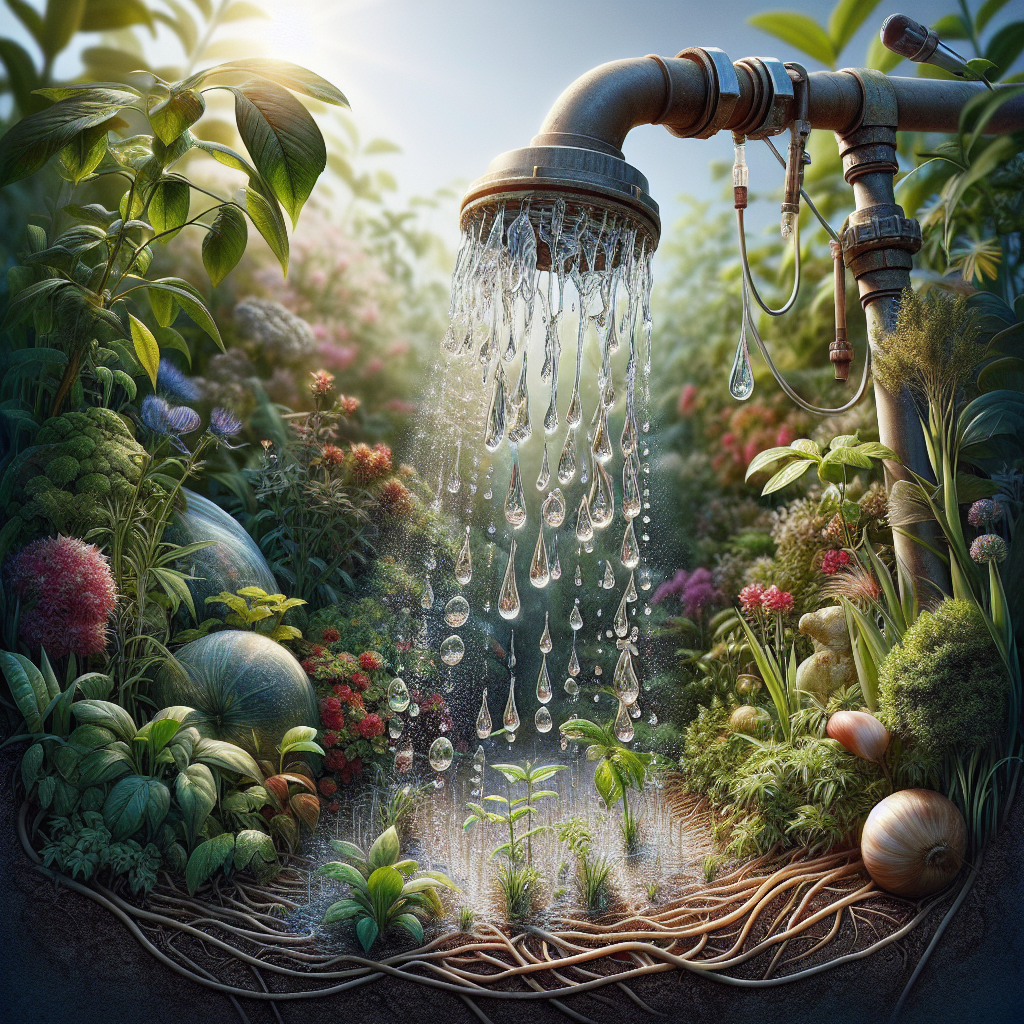In the world of gardening, one of the key factors in ensuring healthy plant growth is proper watering techniques. While traditional methods such as overhead sprinklers and hand watering can be effective, there is a growing trend towards using slow drip watering techniques to enhance growth potential. This method involves providing a consistent, slow flow of water directly to the roots of plants, allowing for better absorption and reducing water waste. By implementing this technique, gardeners can not only save time and money but also promote healthier, more robust plant growth.
Slow drip watering is a simple yet effective way to ensure that plants receive the water they need while minimizing evaporation and runoff. The concept is based on the idea that plants absorb water more efficiently when it is delivered slowly and directly to their roots. This method also helps prevent problems such as overwatering, which can lead to root rot and other issues. By using slow drip watering techniques, gardeners can create an optimal environment for their plants to thrive and reach their full growth potential.
**Benefits of Slow Drip Watering Techniques**
One of the primary benefits of using slow drip watering techniques is that it helps conserve water. Traditional methods such as overhead sprinklers can result in significant water waste due to evaporation and runoff. In contrast, slow drip systems deliver water directly to the root zone where it is needed most, reducing waste and promoting efficient water usage. This not only benefits the environment by conserving water but also saves gardeners money on their water bills.
Another advantage of slow drip watering is that it promotes healthier plant growth. By providing a consistent supply of water directly to the roots, plants are better able to absorb nutrients and moisture, resulting in stronger root systems and overall plant health. This can lead to increased yields for fruits and vegetables, larger blooms for flowers, and overall better quality plants. Additionally, since slow drip systems deliver water at a slower pace, there is less risk of overwatering which can stress plants and lead to disease or pest problems.
**How to Implement Slow Drip Watering Techniques**
There are several ways to implement slow drip watering techniques in your garden or landscape. One option is to use soaker hoses or drip irrigation systems which deliver water directly to the root zone through small holes or emitters along the length of the hose or tubing. These systems can be set on timers to provide a consistent supply of water without needing constant attention from the gardener.
Another method is hand-watering with a slow flow nozzle or watering wand that allows you to control the rate at which water flows out. By directing the stream of water at the base of plants rather than overhead, you can ensure that they receive an adequate supply without wasting excess water on leaves or surrounding areas.
**Tips for Maximizing Growth Potential**
To get the most out of your slow drip watering system, there are a few tips you can follow:
1. **Water deeply**: Make sure that your slow drip system delivers enough water so that it penetrates deep into the soil where plant roots are located.
2. **Mulch**: Adding mulch around your plants helps retain moisture in the soil and reduces evaporation rates, making your watering efforts more efficient.
3. **Adjust frequency**: Depending on factors such as weather conditions and plant types, you may need to adjust how often you use your slow drip system to ensure optimal hydration for your plants.
4. **Monitor soil moisture**: Check regularly to make sure that your plants are receiving enough water without being overwatered. You can use tools such as moisture meters or simply dig down into the soil with your finger.
5. **Combine with fertilization**: Consider combining your slow drip watering routine with regular fertilization schedules for even better plant growth results.
By incorporating these tips into your gardening practices along with utilizing slow drip watering techniques, you can enhance growth potential in your garden or landscape while conserving resources and promoting healthier plants.
**FAQs**
1) How often should I use a slow drip system?
– The frequency of using a slow drip system will depend on various factors such as weather conditions, plant types, soil type etc., so it’s best to monitor soil moisture levels regularly and adjust accordingly.
2) Can I use soaker hoses above ground?
– While soaker hoses are typically buried under mulch or soil surface for direct root access in-ground gardens; they can also be used above ground for raised beds or container gardens by laying them out along rows or around individual pots.
3) Are there any disadvantages to using slow-drip watering techniques?
– Some potential drawbacks include clogging in emitters or hoses due to mineral buildup depending on local water quality; oversaturation if left running too long continuously; higher upfront costs comparedto traditional methods like hand-watering; possible damage from freezing temperatures if left connected during winter months without proper precautions taken beforehand.
With proper care and attention paid towards implementing these methods effectively as described above – combined along with some foresight planning ahead – anyone should easily notice significant improvements concerning overall vitality among all planted varieties!













